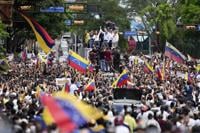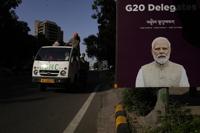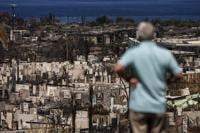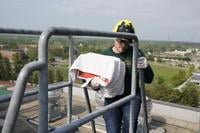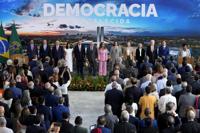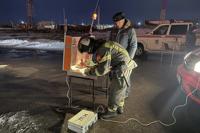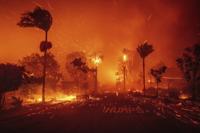CARACAS, Venezuela (AP) — Venezuela was tense on Tuesday as incumbent President Nicolás Maduro and the country’s main opposition coalition both claimed that they had won Sunday’s presidential election.
The national electoral authority proclaimed Maduro the winner. The opposition, represented, by Edmundo González said it has evidence to the contrary.
Electoral authorities installed more than 30,000 voting machines, and by law the opposition had the right to have representatives at all voting centers. But not all were allowed in Sunday or were ousted before polls closed.
After the polls close, Venezuela’s electronic voting machines can print sheets tallying all the votes each counted. Experts say the best way to clear up the dispute is to release those sheets. But the ������ϲʹ������� Electoral Council has not done so.
Here’s a look at what has been said and what is known:
The tally sheets
The main discussion is coming down to the sheets. In case of any dispute, one way of solving it is by checking the tallies the government has against what the opposition parties have.
The electronic machines provide every voter a paper receipt that shows which candidate they chose. Voters are supposed to deposit their receipts at ballot boxes before exiting the polls.
After polls close, each machine prints a tally sheet showing the candidates’ names and the votes each received. Party representatives stationed at polling sites throughout election day get a copy of the tally sheet, and electoral authorities keep another one.
But the ruling party wields tight control over the voting system, both through a loyal five-member electoral council and a network of longtime local party coordinators who get near unrestricted access to voting centers. Those coordinators, some of whom are responsible for handing out government benefits including subsidized food, have blocked representatives of opposition parties from entering voting centers as allowed by law to witness the voting process, vote counting and, crucially, to obtain a copy of the machines’ final tally sheets.
Which numbers have the electoral authorities released?
On its website, Venezuela’s ������ϲʹ������� Electoral Council traditionally posts vote counts for every machine. It has never posted images of the tally sheets.
The president of the council, Elvis Amoroso, said Monday that Maduro got 51.2% of the votes, or more than 5.1 million votes. González garnered 44%, or more than 4.4 million votes, he said.
Amoroso said the other 8 presidential candidates got a combined total of 4% or more than 462,000 votes.
He said those numbers were based on a review of 80% of the tally sheets. He did not show the sheets.
Which numbers have the opposition shared?
Opposition leader María Corina Machado said on Monday that González got more than 6.2 million votes and Maduro got more than 2.7 million votes.
Machado did not offer totals for the other eight candidates.
She said those numbers were based on a review of 73.2% of the tally sheets. She did not show any tally sheet but she directed voters to a website where they can use their ID number to look up an image of the sheet that corresponds to the machine where they voted.
Who has access to the tallies?
The ������ϲʹ������� Electoral Council does not have the obligation to post the tally sheets on its website — which has been down since Monday. But the opposition, electoral experts and some foreign governments disputing the official results are urging the sheets’ release.
On Monday, Machado announced the opposition had created a searchable website with images of every tally sheet that opposition poll representatives were able to obtain. Machado said the information was also being shared with the international community.


